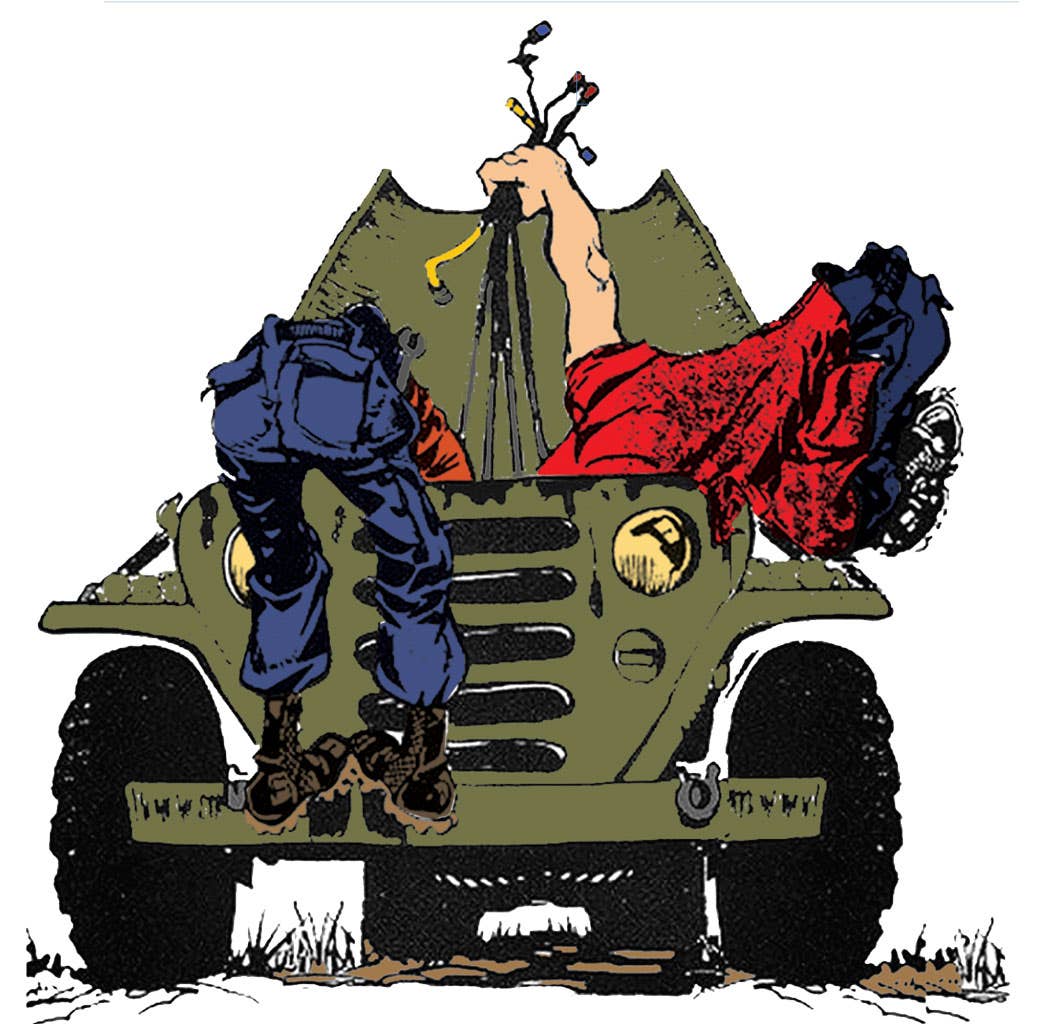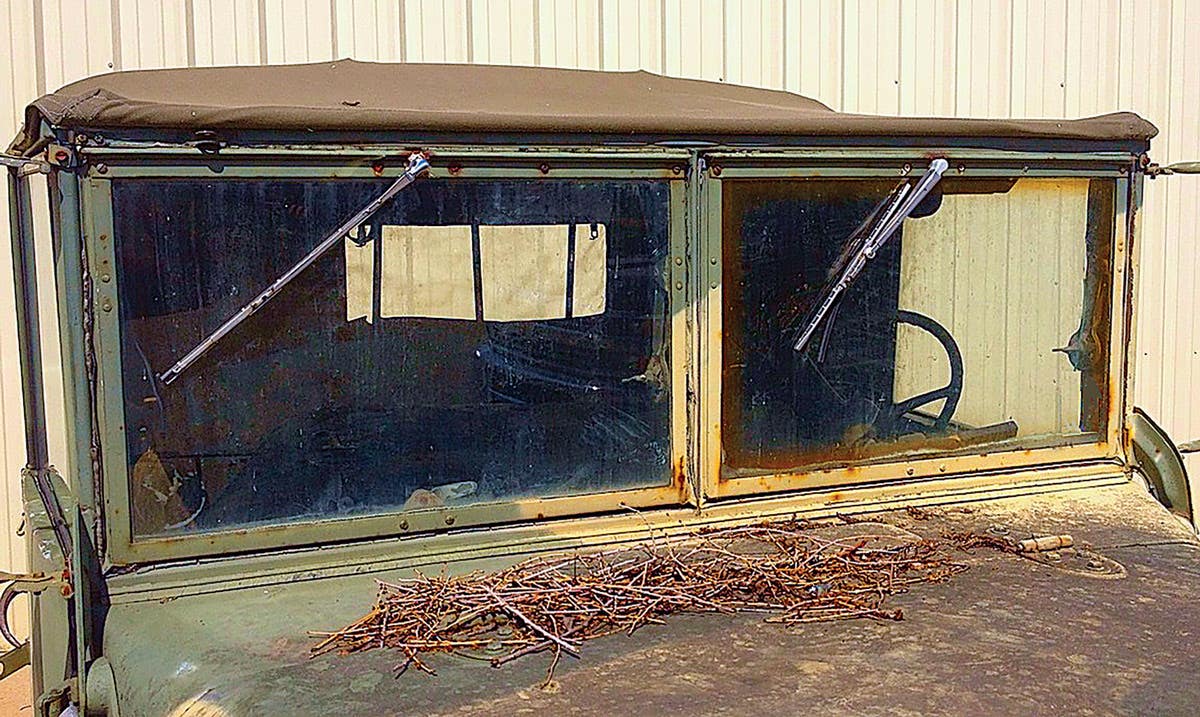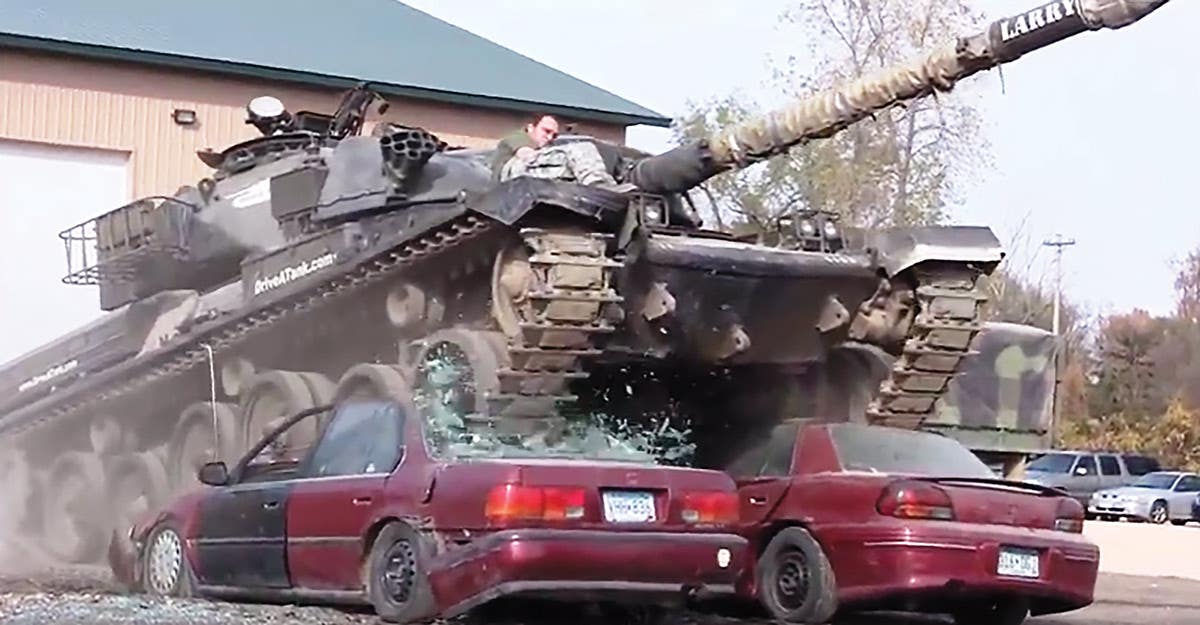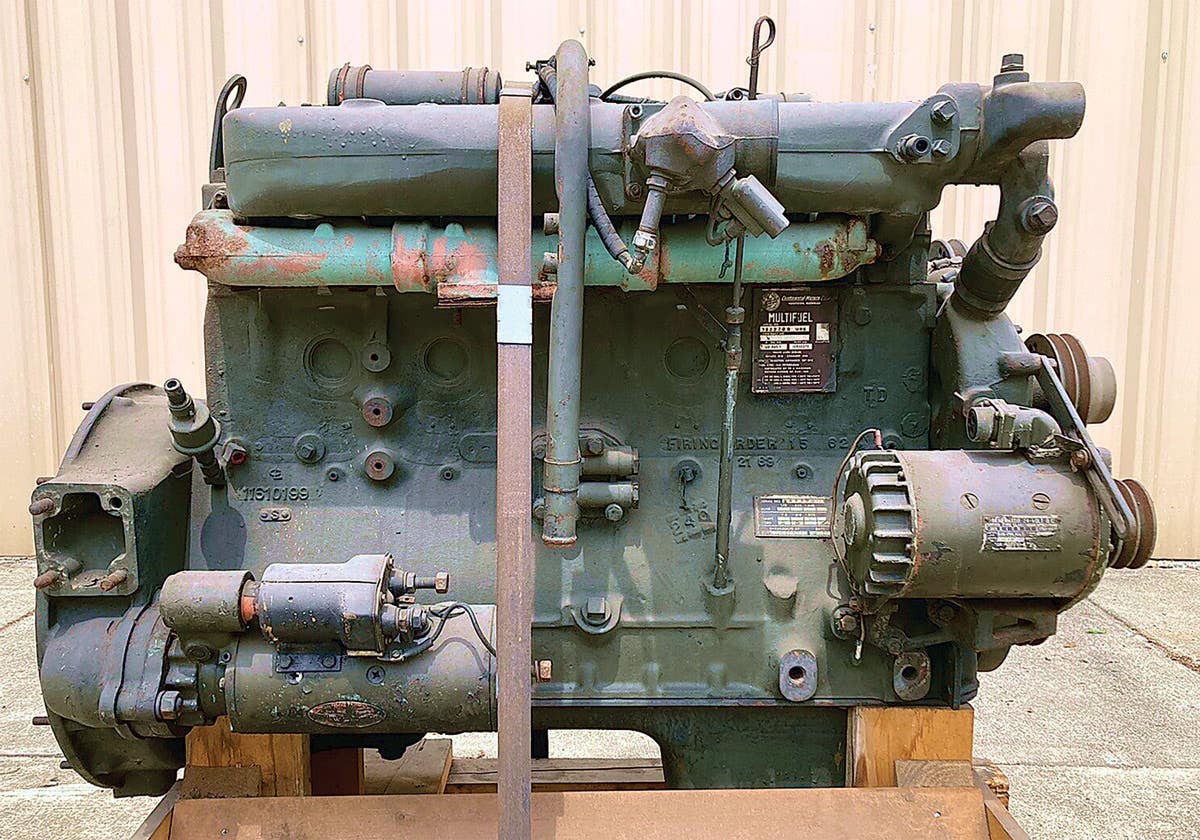Red Ball Meet Full of Stories
Growing Pennsylvania show is a hit with military vehicle buffs from far and wide.
Making the best use of available space gave Red Ball Military Transport's 2007 meet a considerably different look, with the most obvious change being the showfield's location outside the fence.
The improvements resulted from a problem that event organizers everywhere dream of - a growing flea market and show that continues to require more area. Giving the vehicles their own space in the fair's parking lot at the West End Fairgrounds in Gilbert, Pa., was the near-perfect solution.
GMC M6 bomb truck ("runs and stops") was in the flea market with a $3,250 price tag.
Red Ball board member Bob Rubino noteded that, initially, the flea market had been on one side of the grounds and the show on the other, but making room for more vendors meant moving the vehicles to the rear of the property. From there, the goal was just to fit everything in.
"I wasn't happy with that," he said, "because the vehicles were now all the way in the back, forgotten about ... Just look at this whole parking lot. I don't know how many acres are out there that we don't use for parking. I said 'Put the vehicles there.'
"And on top of that, when you're driving by on the road, without the vehicles there, it looks like it's just a flea market or a rummage sale. At least now, with all those vehicles, it gives people an idea what's going on and you get more people coming through the gate. That works great and everybody loves it."
This 1945 Studebaker M29C amphibian was one of five Weasels at the meet.
At roughly 100 entries, the show was comparable to those of previous years, even if it looked larger because the show vehicles were parked together. That meant they weren't squeezed, which added more bonuses.
"They used to be doorknob-to-doorknob over there," Rubino said. "It was horrible if you wanted to take a picture. Even doing the judging, you had to bounce all over."
Purchased a few days before the Red Ball meet, this 1944 Clark CA-1 Airdozer would leave the meet and head for its new home in Belgium.
The meet has been held at the fairgrounds since 2002. It had been hosted by the Tobyhanna Army Depot, but moved because of the September 11, 2001 terrorist attack on the World Trade Center. Although Tobyhanna is closer to major highways, Gilbert is nearby and equally accessible. The meet drew from as far as Maine and Tennessee. The advantage in being along highways is probably minor for most attendees.
Consider the case of Jaap Riepvelv, who was showing his newly purchased 1944 Clark CA-1 Airdozer. After the show, of course, he had to take his machine back home. To Belgium.
"I've had it just a couple of days," Riepvelv said. "I'm going to park it with the rest of the stuff. I'll push some dirt with it, I think, to try it."
Studebaker's US6 trucks are perhaps less known than the comparable GMC CCKWs. This one is a 1945 and its distinctive cab clearly identifies its builder.
Riepvelv had owned several other dozers, but they were unrestored and he's never had the chance to operate one. His plan was to learn from the manual, which should be workable since he understands the mechanics of the machine and he's had experience with other tracked vehicles. The Clark does have a key feature that enhances its appeal to a collector. Since it's designed to be flown to any site where the military needed to move earth, the 4,200-lb. bulldozer is manageable.
"You can fit it on a trailer," Riepvelv said. "It's easy to move around ... And if you take the blade off, it's even smaller. It's about four feet wide, the blade's about five or six."
Certainly one of the smaller military vehicles at the meet, this Willys M274 is a 1958 model.
Norman Dauerer, of Hopewell Junction, New York showed his 1942 Ford GPW, an example of a vehicle perhaps not designed for air delivery or grading, but believed by many to be capable of nearly anything. Dauerer's GPw is configured for the 106th Cavalry and that was a very specific choice.
"The cavalry," Dauerer recalled, "they were my rescuers in Germany. I was in Germany during (World War II) and April 28, 1945 was when the front moved through. I was living on my uncle's farm along with my mother and my brother and at the end of the war, my father came there, too. When the Americans came, three jeeps pulled in."
Dauerer was been born in Munich, but is a U.S. citizen because of his father's status as a naturalized American citizen. His brother was born in the United States, he said, but his mother had returned to Germany before spending the minimum time in the U.S. to apply for citizenship. On that April morning, his family had made it to a nearby village and was caught in an artillery battle.
This 1942 Ford GPW was restored to 106th Cavalry appearance.
"All of a sudden, everything got quiet," Dauerer said. "My father went back down to the farm to check it out, see how things were going, and he came back to get us and he said 'the Americans are here' ... Because my father was an American citizen who spoke English, they took him along."
Once his GPW's restoration was completed, Dauerer began tracking down the unit to which those three jeeps had belonged. A false start stretched the task into six months, but that didn't matter. Dauerer spoke of another delay that didn't matter, either.
"We crossed the North Atlantic on a Liberty Ship in January-February of 1948," he said. "The trip, the crossing was supposed to take 12 days. It took 18. For us, it was fun. We were heading to America. Near the end of the trip, every morning, we went on up to the deck. We wanted to see the Statue of Liberty. Everybody wanted to be the first one to spot it."
Like Dauerer, Ronald Pettinger of Forest City, Pa., has World War II memories that have influenced his vehicle choices.
"The whole thing started when I was 12, I think, back in my native England," he said. "I fell in love with jeeps and things American military because we depended on them for everything."
He's owned several jeeps and a Dodge M-37, and had his 1944 Dodge WC-63 at Gilbert. The six-wheel-drive, 1 1/2-ton Dodge is somewhat underpowered and comes up short on brakes, he said, but it made the 70-mile trip to the meet without difficulty.
"There's a world of difference [from jeeps]," Pettinger said. "The jeeps are much more maneuverable and the little jeeps are so handy to crawl through the woods with. I can't really go through the woods with this and I wouldn't want to, anyway, for fear of damaging it."
In short, the Dodge is a truck, and while he said it was the right one to buy and he'd do so again, he's considering selling. Not because he doesn't like driving it, however.
"It's a fairly high-maintenance truck," Pettinger said. "One rear end, two rear ends, the on e at the front, all have to be checked, the transfer case has to be checked, the transmission has to be checked, the two steering knuckles have to be checked and all the grease fittings. It really is a chore for me to lie under it. I have to jack it up and put it on jackstands so that I can get under the axles. At age 74, it's getting a bit much.
"I like to drive it. I wish I could find a friendly neighborhood boy who'd grease it."
The story is different for another Dodge owned by Joe Hall of Oakland, Maine. He rarely drives his 1941 WC-6 command car.
"It steers nice, it rides nice, the controls are easy to get to," he explained. "My biggest complaint with it is that it's blind. You just can't see. It's too high."
Seeing over the truck's fenders is difficult for a driver who's not tall, and seeing to the rear is a challenge for any driver. That explains why Hall's covered only 45 miles in it since its completion. The restoration went on for over four years, he said, after beginning with a body, rear fenders and runningboards on a frame with one axle. The Dodge did have a nose and an engine, but not the correct ones and Hall said he knew what he was getting into when he bought it. The "why-did-I-do-it" slap on the forehead came later.
"I got to that point when I had to start work on the body," he admitted, "because it's so big. It's not like a jeep. A jeep, one guy can manhandle. This is four people or a tractor."
There were the few available reproduction parts, "a lot of hammer-and-dolly work" and five parts trucks that went into the body, although many of the mechanical parts either interchange with those of other Dodges or could be replaced by them. Hall found it worth the effort and the parts hunting for the most basic reason: he likes it.
"I like showing it off," he said. "And I like listening to the vets talking about them ... You can see them walk up to it and stop and go back 60 years. I like being able to do that for them."







